“So… how much Native are you?” The dreaded question every Tribal person has been asked. Blood quantum or “how much Native blood you have” is a concept that has been with us for many years, but have you ever wondered where it comes from?
The idea of blood quantum was first introduced in 1705 by the Colony of Virginia, which adopted the “Indian Blood law.” This law was used to reduce the civil rights of Tribal people with ½ or greater blood quantum. At this time, blood quantum, in part, was based on what settlers saw before them, such as the darkness of a person’s skin. It was not based on the rules Tribal Nations had established for themselves to determine membership.
Over time, the use of blood quantum evolved as a way to determine whether Tribal people were “Indian enough” to be eligible for certain land, goods, or services from the US government. This use of blood quantum developed because Tribal Nations signed treaties with the US government (and colonial leaders), where they agreed to share the land with the White settlers in exchange for healthcare, education, housing, and other rights.
Tribes did not start to use blood quantum to determine membership until 1934 when the US government introduced the Indian Reorganization Act.
As you may have seen in your own life, there are many problems with using blood quantum to decide who is considered a tribal member. For example, blood quantum doesn’t define one’s Indigeneity (how Tribal you are). Rather, blood quantum, back to its origins, is based on what makes someone American Indian. However, many people use it to exclude others, enact lateral violence, and make them feel like they aren’t “Indian enough.” The idea of using blood quantum to determine tribal membership was developed by government officials as a way of releasing the US government from their treaty obligations to Native peoples. The idea was that over time, as Native people intermixed with non-Native people, they would become extinct.
Also, using blood quantum to determine tribal members is not traditional. Prior to the arrival of Europeans, tribal membership, for the most part, was based on kinship, and matrilineal and/or patrilineal descent. However, tribes also considered different factors. For example, it was common for communities to decide someone’s membership based on the individual’s relationship to and involvement in the community. It was also common for tribes to adopt non-native allies and friends into a tribe, or banished individuals from a tribe for committing crimes that negatively impacted the community.
Tribal Nations have the right as self-governing nations, to choose how they define tribal membership. However, many tribes, possibly without realizing the full impact, adopted blood quantum as the defining factor for membership. This is why we see different membership rules for different Tribal Nations today. That being said, there are efforts to return to traditional ways of determining membership, including rejecting the concept of blood quantum and relying upon lineal descent and other factors.
Your connection to your culture, and your heart and passion for your people, better define your Tribal upbringing than blood quantum. Given this, don’t let people define who you are based on their views and concepts. The next time someone asks “How much Native are you?” how will you respond? Needs ideas? Read these Tips for Moving Beyond Blood Quantum.
Additional Resources:
- NPR – So What Exactly Is Blood Quantum?
- NPR – It’s Not Just About the Blood
- All My Relations Podcast- Beyond Blood Quantum
- What Is Blood Quantum?
Author: Tamee Livermont is a citizen of the Oglala Lakota Nation. Her passion and interests lie in advocacy to create healthier, safer communities for generations to come. She is pursuing a career in medicine and policy. In her free time she is an advocate for equity and justice, hikes, and quilts.


